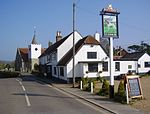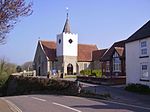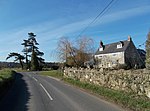Knighton Gorges Manor

Knighton Gorges Manor was one of the grandest manor houses on the Isle of Wight, located in the hamlet of Knighton, near Newchurch. The Elizabethan-Tudor style house's history has been a saga of tragic events. It started with a ghastly note of Hugh de Morville, an escapee who resided there after murdering Archbishop Thomas Becket of Canterbury, on 29 December 1170, along with his three other comrades in crime Reginald FitzUrse, William de Tracy and Richard le Breton, then the death of Tristram Dillington in 1718 under mysterious circumstances and finally, 100 years later, followed by another tragic event of the owner of the Manor, George Maurice, destroying the manor in 1821 on his own volition (before his death), purely as a parental annoyance and spiteful action, to his daughter marrying a clergyman, against his wishes thus preventing her from owning the manor.These events have also generated reportedly paranormal events occurring at the manor location, witnessed in the form of the destroyed manor house itself appearing in an apparition form, ghost of Sir Tristram riding a ghostly horse each year on the anniversary of his death, and sighting of animal-like gargoyles on top of each gatepost at the entrance to the manor site.
Excerpt from the Wikipedia article Knighton Gorges Manor (License: CC BY-SA 3.0, Authors, Images).Knighton Gorges Manor
Bartletts Close,
Geographical coordinates (GPS) Address Nearby Places Show on map
Geographical coordinates (GPS)
| Latitude | Longitude |
|---|---|
| N 50.664444444444 ° | E -1.2083333333333 ° |
Address
Bartletts Close 8
PO36 0FB
England, United Kingdom
Open on Google Maps






